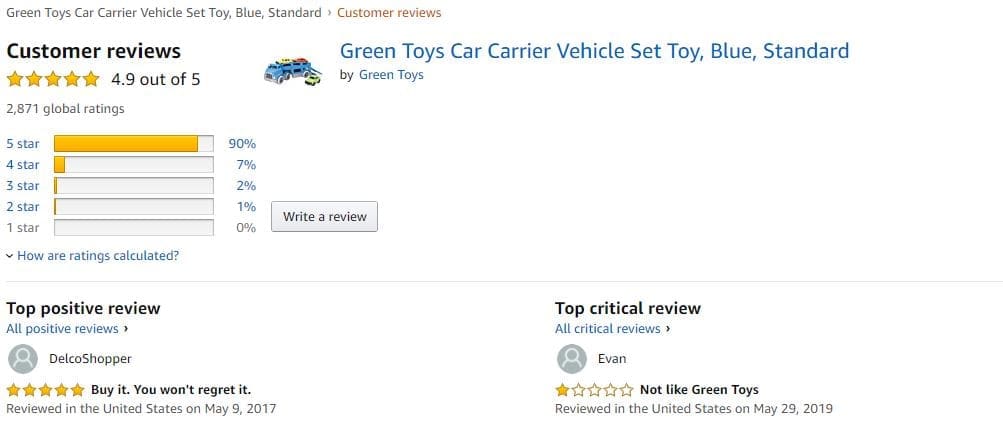5 Expert Amazon Seller Tips
The Amazon marketplace is increasingly a first port of call for many online shoppers who opt to ‘direct shop’ within the Amazon platform, mitigating traditional search engine comparison in favor of the aggregated Amazon experience. Amazon also fulfills a comparison function within the information seeking and buying process, helping brands broaden their consumer exposure, and bring products to wider audiences within minutes of setting up an Amazon store. Review our 5 expert Amazon Seller Tips to increase your sales today!
For online sellers Amazon, like eBay provide a fast and effective route to markets both local and global, however if you are new to selling online and want to add Amazon to your Omni channel marketing approach or are an established Amazon seller looking at generating greater gains from your established Amazon shop, you should take a look at these expert tips.

# Tip 1 – Don’t forget about organic search optimisation
Amazon like every other aggregator shopping engine relies heavily on understanding, indexing, and ranking content based primarily on relevancy of products and services to the user search query and subsequent search query refinements.
Many of the traditional search engine optimization (SEO) tactics are key for product placement, positioning, and ongoing updates to help generate the most ROI from your Amazon Seller approaches.
WorldFirst suggest that it is important to:
“Spend time and resource understanding Amazon’s ranking factors so your product gets in front of as many customers as possible. Make sure you find out the right keywords and descriptors for your product and make use of the additional keywords that Amazon allows you to add to include similar listings.”
Source: WorldFirst ‘Selling Online Blog’.
# Tip 2 – Price point is key
Regardless of what you are selling, a large proportion of people using Amazon as a preferred shopping destination choose to do so based on:
- The convenience of single destination shopping/ease of repeat purchasing
- Speed and price of delivery
- Perceived lower pricing and effective price comparison
- Self-image motivated buyers (* see # Tip 3)
Based on the price of goods, marketplace trust, and the transactional intent (bottom of the funnel) that many Amazon consumers display, it is no wonder why many businesses flock to Amazon for quick and effective sales to bolster current performance.
One area where businesses often find themselves struggling with an Amazon store, however, is the price point differences between effective Amazon sales and direct website sales.
As your business is placing itself on a like-for-like product auction, the lower the price displayed on your product offering, the higher the expected volume of sales on Amazon.
The challenge that this provides businesses with is the level at which Amazon can still provide and sustainable product revenue margin despite the often lower sales price on Amazon compared to other mediums.
Product selectivity is an important aspect of this, as is the need to sell faster. For example, old product ranges, over-stocked items, and selling products before assumed expiry dates (expiry date being tied to the expected timeline of the product to the audience as well as the traditional sense of the term) can all be worthwhile trigger points for selling cheaper on Amazon.
Infinite FBA provides tips and knowledge about the best Amazon seller tools. In order to increase your transaction you should read this salehoo review if you want your Amazon business to become productive in online transactions
# Tip 3 – The Amazon audience is not the same as the general online shopper


With the growth of deep data, machine learning, and artificial intelligence within the marketing industry, companies know more about their consumer’s habits, needs, and value assumptions, than at any other stage in human evolution.
This data enables marketers to create every-increasing personalized selling experience for the demographics that are most critical to their business success.
According to digital commerce:
“While Amazon shoppers are pretty similar to online shoppers overall, with a 52% female to 48% male ratio, non-Amazon shoppers skew more heavily male. Only 44% of non-Amazon shoppers are female compared to 56% who are male…
… They (Amazon shoppers) are though, more likely to make impulse purchases and are motivated to make brand decisions that help their self-esteem and self-image. Millennial Amazon shoppers are even more motivated by self-image and are further motivated to purchase things if they are fun, exciting, and rewarding.”
# Tip 4 – Don’t toe tip, Amazon Seller success requires patience and progression
Amazon is hugely established and long gone are the opportunities to simply throw a shopping feed and marketing spend at Amazon, and watch the profits come back in.
All of your key competition is likely to be using Amazon as part of their marketing mix to some extent, and in order to discover ways in which becoming an Amazon Seller can work for your business, you need to strategically plan, implement, review, and refine your approach.
An Amazon Seller account takes time to establish itself, you will find that some products do not have feasible ROI ranges based on lower competitor price positioning, and you will find that the Amazon user is not the typical online buyer (as one example, delivery costs are much more important as a consideration to the amazon user than the traditional e-commerce shop buyer).
The same as you would with Google AdWords, Search Engine Optimization, Remarketing, campaigns, and other marketing tactics, you cannot expect to be anywhere near maximum efficiency from the outset.
Setting your expectations to include trial and error, and including a budget to experiment with approaches used, are all important Amazon Seller consideration elements. For the more established Amazon store experimentation budget is still a prerequisite for getting every ounce of value (and likely ROI) from your Amazon selling efforts.
If you are wondering if becoming an Amazon Seller is worth all of the effort, here are a few stats (courtesy of Expanded Ramblings) to reinforce the opportunity, should you decide to invest in Amazon to the level required:
- Amazon was founded in 1994
- There are 300 million Amazon users
- The Amazon mobile app has 30 million users on average per month
- There are over 100k+ sellers on Amazon who recorded over 100, 000 USD in sales in 2016
- 50% of US online shoppers have/are on the Amazon mobile app
- 80% of US Amazon users purchase monthly and 20% purchase weekly
- Amazon net sales in Q3 2017 totaled 43.74 billion USD
# Tip 5 – Reviews, reviews and more reviews


Tied in part to the personalization of search and certainly associated to users trusting external reviews more than any other factors when buying a new product or service, the more reviews that your products have (the more positive reviews that your products have), the greater the conversion rates you will see through your Amazon shop.
Volumes of reviews matter too – not just for the user within the buying process, but also for Amazon as part of the ranking, trust, and authority signals provided by your products and services for ranking within Amazon.
An article from the Kissmetrics blog, states that over 70% of all Amazon buyers look at product reviews before making a buying decision. They go on to state that:
“Nearly 63% of consumers indicate they are more likely to purchase from a site if it has product ratings and reviews…
… Smart marketers know that social proof is the marketing tactic for easing the minds of worried customers.”.
In addition to the expected benefits of reviews and wider social proof tied to expected product/service quality and buyer experience, is the added business value of herd mentality. People often find it useful to be able to follow a path well-trodden. This helps alleviate anticipated risk, reinforces expected reward, and generally assists the buyer in making spending decisions faster, without some of the physiological barriers that are present with any buying (and even more so, online buying) approach.
Conclusion | Amazon Seller Tips
Amazon selling provides business with almost any budget and operating in most industries, the opportunity to add another bottom-of-funnel marketing opportunity to the marketing mix.
Amazon Seller accounts are a means to target users ready to buy who have trust in Amazon as a marketplace, and frequently seek Amazon as a first point of call, or certainly as part of comparison within the buying process.
How to find amazon influencer storefront?
Whilst Amazon can provide fantastic results for business, it is not an opportunity that can be taken lightly, or without serious budget, approach, and experimentation considerations.
In this article I discussed my top 5 Amazon Seller Tips:
- # Tip 1 – Don’t forget about organic search optimization
- # Tip 2 – Price point is key
- # Tip 3 – The amazon audience is not the same as the general online shopper
- # Tip 4 – Don’t toe tip, Amazon Seller success requires patience and progression
- # Tip 5 – Reviews, reviews and more reviews
Keep the above in mind, and please do share your own tips from your amazon selling.
Bio: Lee Wilson – Head of Enterprise SEO, Vertical Leap. Lee has been leading marketing teams since the early 2000’s, and currently heads up the SEO department for a UK top 10 leading search marketing and digital agency (Vertical Leap).




